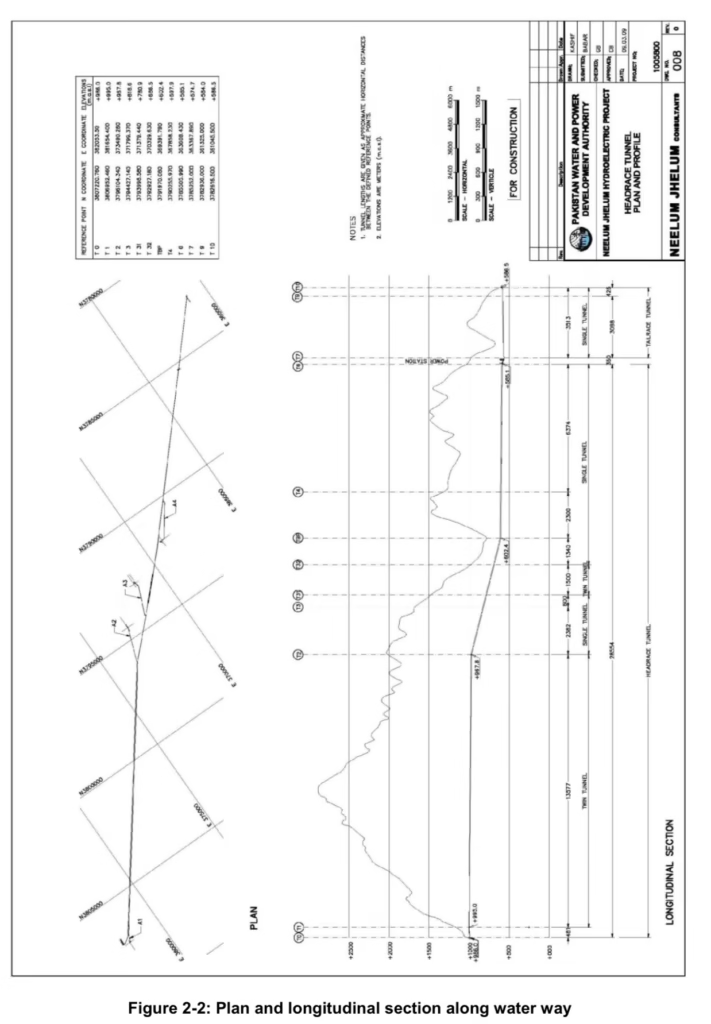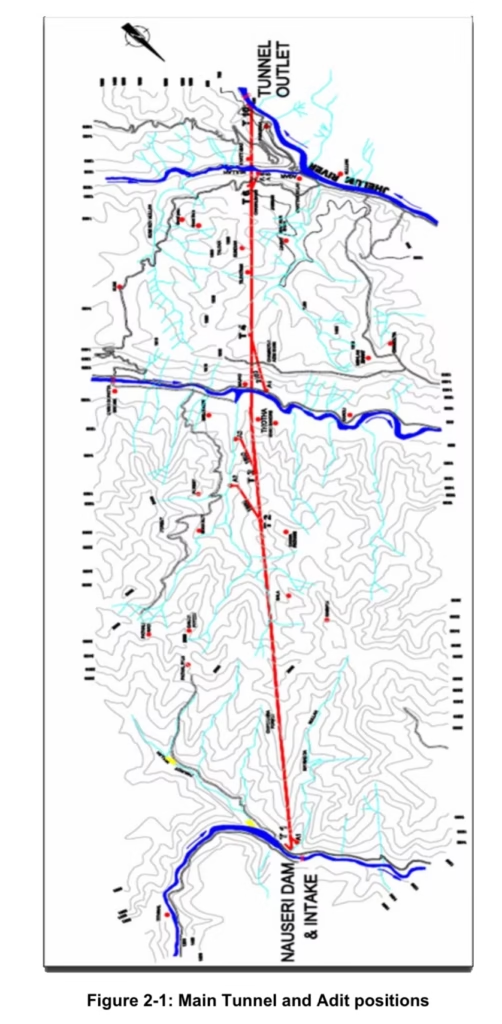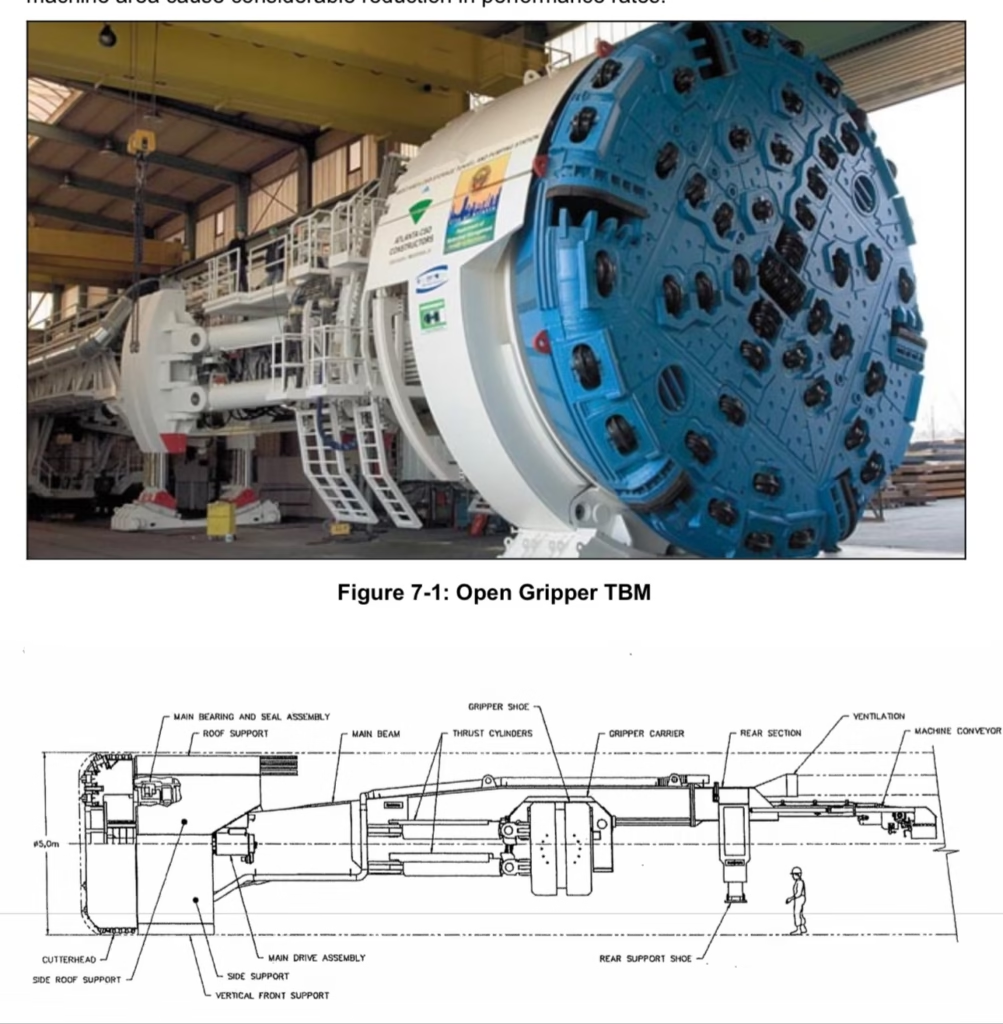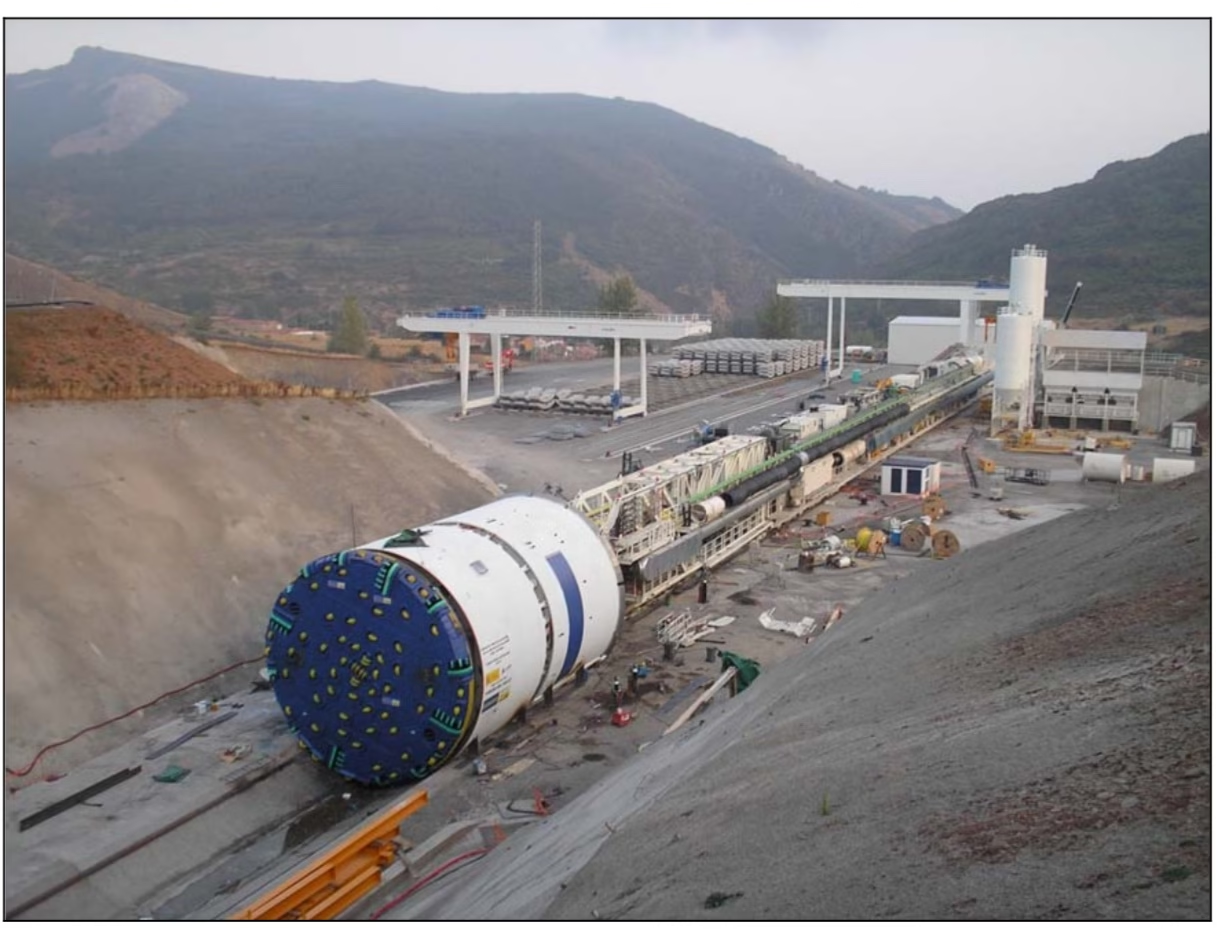Introduction
The Neelum-Jhelum Hydroelectric Project (NJHP) is one of Pakistan’s most ambitious hydropower projects, designed to utilize the Neelum River’s flow to generate electricity. Located near Muzaffarabad, the project spans diverse geological terrains and features a complex network of tunnels. This article provides a detailed overview of the project’s geological framework, rock properties, risk factors, and technical challenges, emphasizing tunnel boring machine (TBM) operations and rock mass behavior.

Geological Overview
The NJHP is situated in a tectonically active region, primarily composed of molassic sedimentary rocks of the Murree Formation. These rocks, formed during the Paleocene to Eocene era, include sandstone, mudstone, siltstone, and occasional shale. Structurally, the area exhibits tight folds, repeated faulting, and steep ridges, posing challenges for excavation and structural stability.
Key Geological Features
- Fault Lines: The project traverses major fault systems, including the Main Boundary Thrust and Muzaffarabad Fault, which significantly influence the geological conditions.
- Rock Formation: The Murree Formation is characterized by alternating layers of sandstone, siltstone, and mudstone, with varying degrees of weathering and jointing.
- Seismic History: The 2005 Muzaffarabad earthquake underscores the region’s seismic vulnerability, necessitating rigorous engineering solutions.
Rock Properties: Insights from Laboratory Testing
Comprehensive geological studies and laboratory testing programs have provided essential data on the rock properties encountered along the tunnel alignments.
Intact Rock Properties
- Compressive Strength:
- Sandstone (SS-1): High strength, averaging 86 MPa.
- Mudstone: Moderate strength, around 42 MPa.
- Elastic Modulus:
- Sandstone: 58.1 GPa for SS-1.
- Siltstone: 40.6 GPa.
- Mudstone: 27.4 GPa.
- Tensile Strength:
- Generally weak in tension, with values ranging from 5.1 to 8.5 MPa for different rock types.
- Specific Gravity:
- The average specific gravity for all rock types is approximately 2.74, indicating a relatively dense rock mass.
Durability and Slake Tests
Mudstone and siltstone were tested for slake durability, revealing variability in resistance to water-induced weathering. Sheared mudstones exhibited lower durability, with slake durability indices as low as 37.3%, compared to higher values for unaltered samples.
Tunnel Boring Machine (TBM) Operations and Risk Scenarios
The excavation of 32.2 km of tunnels through varying rock conditions presented significant challenges. A detailed risk analysis identified potential geotechnical and operational issues.

Geotechnical Risks
- Ground Deformation: Excessive deformation in high-stress zones can hinder TBM operations and increase the likelihood of equipment damage.
- Tunnel Face Stability: Weak or faulted rock masses may lead to face collapse, requiring additional support.
- Groundwater Inflows: High-pressure water inflows from aquifers pose risks of flooding and production delays.
Operational Challenges
- TBM Misalignment: Softening of mudstone layers may cause the TBM to lean or sag, affecting the excavation trajectory.
- Disc Cutter Wear: Rocks with high abrasivity lead to increased wear and replacement frequency of TBM components.
- Muck Handling Issues: Reduced disposal capacity can disrupt excavation progress.
Mitigation Strategies
- Pre-Excavation Grouting: Reducing groundwater inflows by sealing faults and fractures.
- Advanced Monitoring Systems: Implementing convergence monitoring and face mapping to ensure real-time assessment of ground behavior.
- Optimized Support Systems: Installing shotcrete, bolts, and other reinforcements promptly to stabilize tunnels.
Environmental and Structural Impacts
The geological and hydrological conditions at NJHP have far-reaching implications for the surrounding environment and structures.

Environmental Concerns
- Water Seepage: Groundwater ingress into powerhouse caverns can result in operational inefficiencies and long-term pumping costs.
- Slope Stability: Excavation-induced stress redistribution could trigger landslides or surface subsidence, particularly near fault lines.
- Community Impact: Changes in groundwater levels may affect local water supplies, necessitating alternative provisions for nearby villages.
Structural Challenges

- Seismic Resilience: Proximity to active faults requires robust designs to withstand seismic events.
- Rock Support: The variability in rock quality, from strong sandstone to weak shale, demands customized support solutions.
Testing Programs: A Holistic Approach
The NJHP implemented a phased testing program to ensure accurate characterization of the geological conditions. Key testing phases included:

- Feasibility Stage: Initial assessments conducted in 1997, focusing on general geological properties.
- Construction Stage: Detailed testing during 2009–2010 to refine rock mass parameters.
- Final Phase: Focused on under-represented rock types such as mudstones, conducted during 2011.
Key tests included:
- Uniaxial and triaxial compressive strength tests.
- Hoek direct shear tests to determine discontinuity behavior.
- Permeability measurements to evaluate groundwater flow potential.
Lessons Learned and Future Recommendations

- Geological Variability: Continuous updates to geological models are critical as more data becomes available during excavation.
- Risk Management: A proactive approach, including contingency plans for TBM failures and geotechnical issues, minimizes delays.
- Instrumentation and Monitoring: Advanced monitoring systems are indispensable for correlating field observations with design assumptions.
Conclusion
The Neelum-Jhelum Hydroelectric Project exemplifies engineering excellence in overcoming complex geological challenges. Through rigorous testing, meticulous planning, and adaptive construction methods, the project has navigated risks associated with seismic activity, weak rock masses, and groundwater inflows. The insights gained from NJHP serve as a valuable guide for future infrastructure projects in similar challenging terrains.




